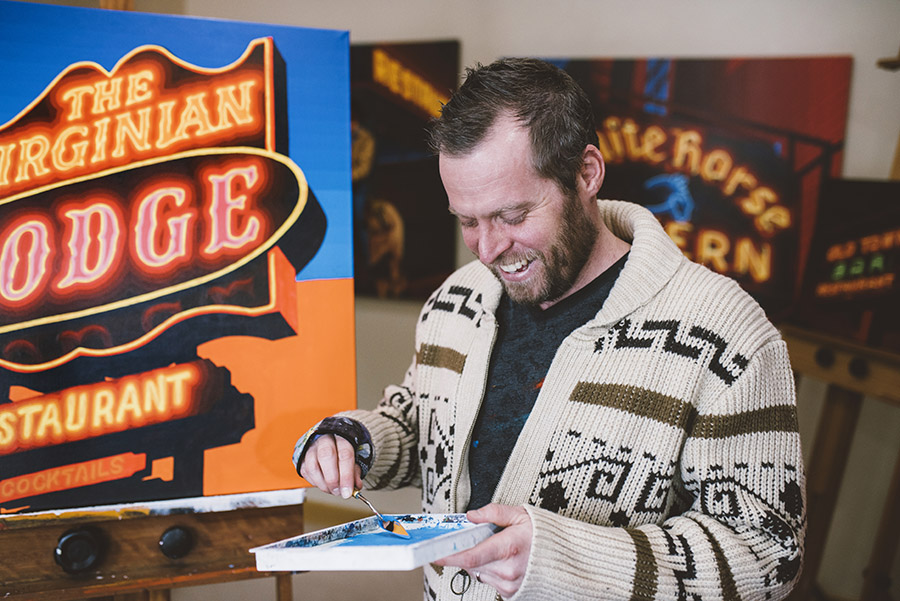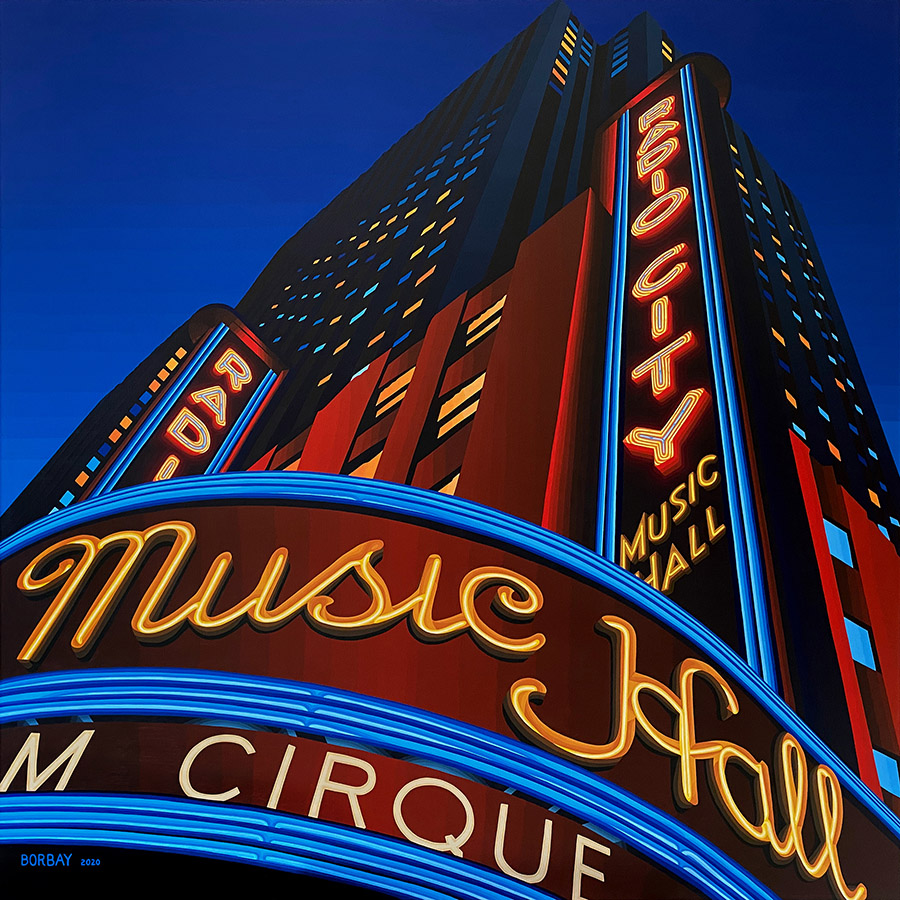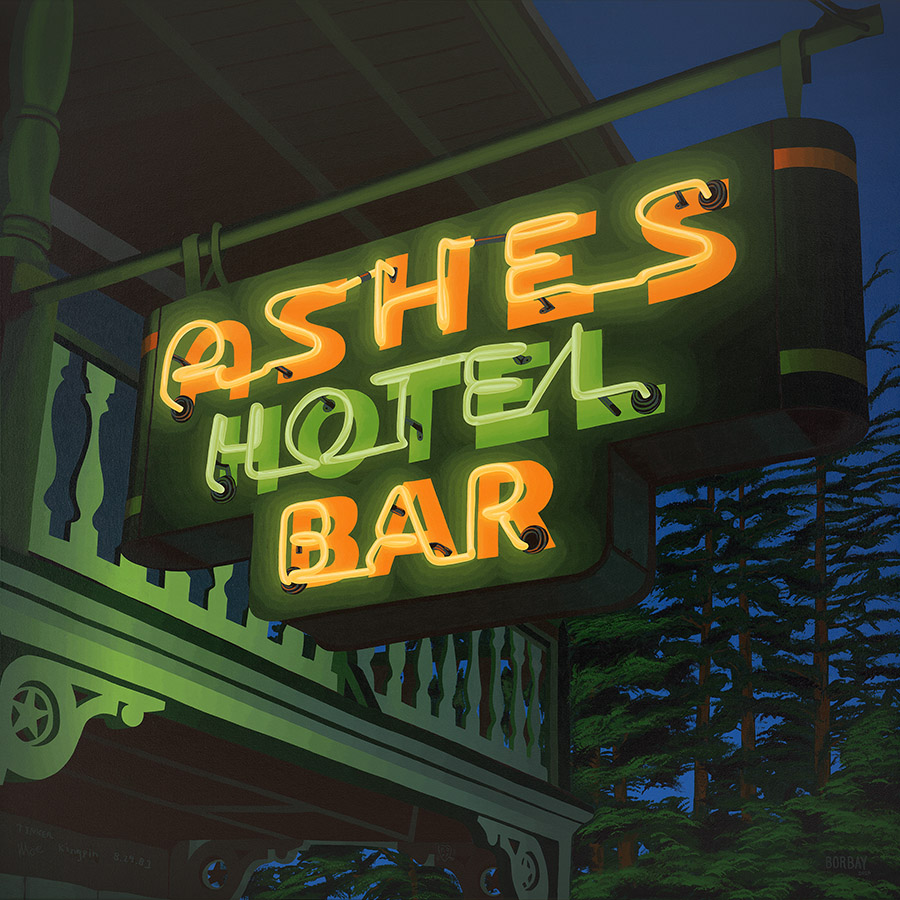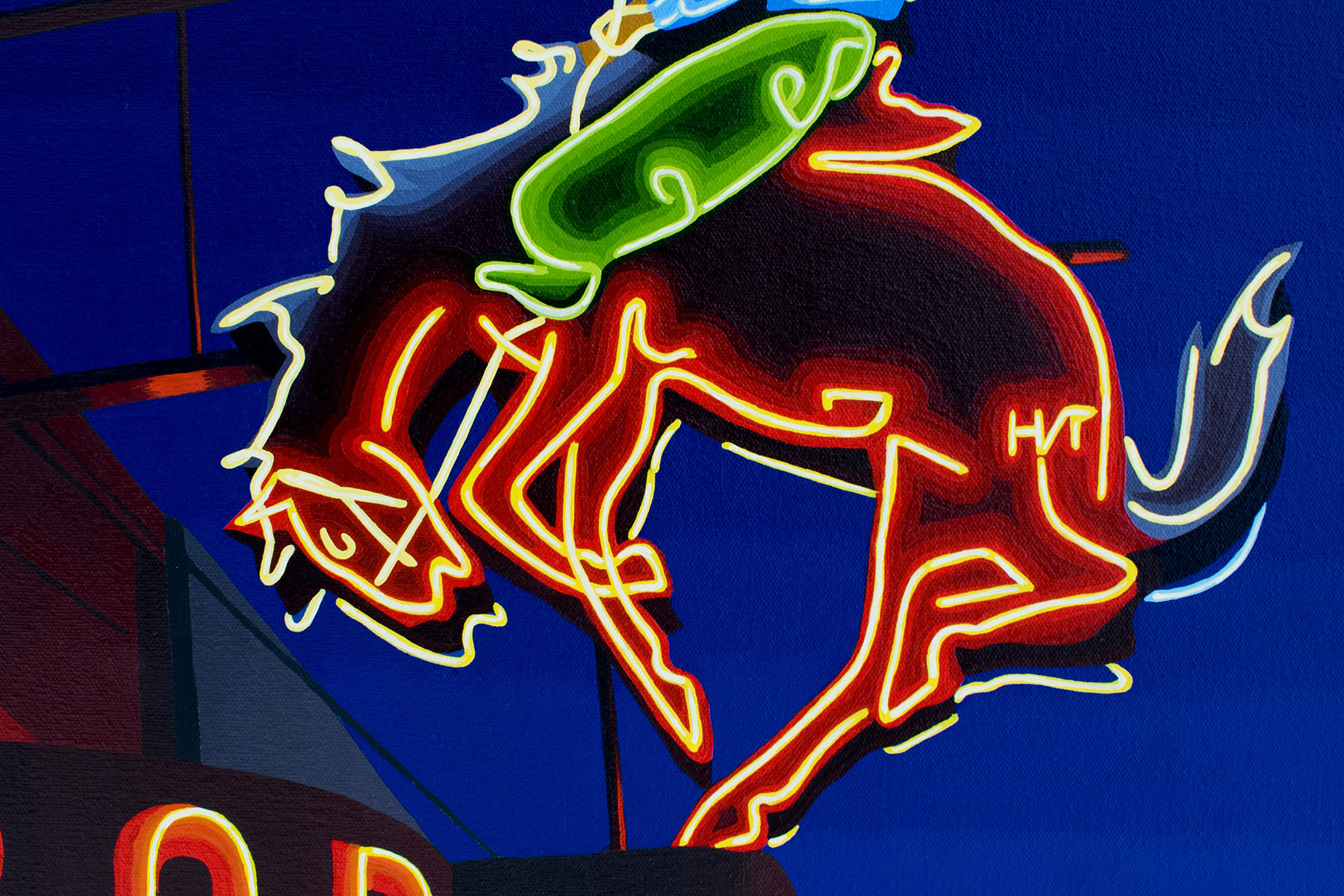Several years after his death in 1947, the autobiography of Nobel Prize-winning theoretical physicist Max Planck was published. Entitled Scientific Autobiography and other papers, the posthumously released account of Planck’s life revealed his work’s philosophical underpinnings, his thoughts on ethics and morals, and other fascinating insights into his singular mind. Among these, a formulation that came to be known as Planck’s principle, which reads:
“An important scientific innovation rarely makes its way by gradually winning over and converting its opponents: it rarely happens that Saul becomes Paul. What does happen is that its opponents gradually die out, and that the growing generation is familiarized with the ideas from the beginning: another instance of the fact that the future lies with the youth.”
— Max Planck, Scientific Autobiography, 1950, p.97
A common paraphrasing is even more explicit. “Science,” the saying goes, “progresses one funeral at a time.”
The root concept behind Planck’s principle (that ideological intransigence is an ever-present hurdle for progressive thought) was quickly adapted by various scholars and philosophers of knowledge including Thomas Kuhn, whose book The Structure of Scientific Revolutions explored it in a more comprehensive manner. There, Kuhn described scientific revolutions as non-rational developments. Like Planck, Kuhn believed new knowledge rarely spread in a linear fashion through the strength of fact alone. Instead, he wrote, progress is made in a periodic series of “paradigm shifts.” This process becomes manifest in ways that appear abrupt and unpredictable to outside observers. New knowledge is consistently sought by pushing the boundaries of normal science in order to explain phenomenon in a more satisfactory way, but new models of understanding must gain widespread backing before they can overtake old ones. This is a time-consuming process, not just because of the uncertain nature of experimentation and knowledge-seeking, but also due to the subjectivity of all those involved. It can take a lot for people to change their minds, to abandon old ideas about the world in favor of new ones. Even in domains dedicated to human advancement, progress can be checked by ideological resistance.
While there has been push back to Planck and Kuhn over the years, the underlying concept still proves valuable — that there exists a pattern to explain the relationship between philosophical intransigence and progress. (While Planck’s principle possesses a certain ageist flair, it should be noted that such a reading is not only hurtful, but inaccurate according to the literature. A more constructive way to understand the underlying principle is to replace the image of an aging person with an outdated concept. In this way we can divorce ourselves from the problematic issues of age-related discrimination and focus on the more relevant issue here of ideological evolution over time.) Skeptics might say the stubborn adherence to flawed models of understanding which have been undermined by new realizations isn’t a particularly innovative — or helpful — observation. Such behavior is all around us, all the time. That is true, but it’s missing the point. (It should also be noted that the discussion of ideological evolution doesn’t necessarily carry with it an associated value statement. In other words, simply because there is a pattern to the way in which one idea overtakes another doesn’t mean the victorious one is necessarily the best one. The pattern of ideological evolution makes no distinction between the value of ideas, it simply illustrates the processes by which they change.)
In the end, the real value in what Planck observed and Kuhn later developed was in shedding light on an important pattern. Indeed, it is useful to understand what leads to ideological transitions, the specific mechanisms that bring about change and the sequence it follows. Armed with this sort of knowledge, innovators would be able to plan accordingly, coming up with proliferation strategies and tracking procedures which could help speed the rate of progress within their respective fields. Resistance would likely persist during a change-making event, but by arming themselves with knowledge derived from documented historic processes, they could bring about their goals in a way that minimized resistance efforts. Persistent, outdated ideologies wouldn’t need to be suffered in the long term.
This realization is a significant one. Beyond the realm of science, it is useful in nearly every discipline and every domain, particularly those that have historically resisted change.
In the world of fine art, there are many who purport to want change. For years university programs have churned out idealists who rail against entrenched systems, particularly the capitalist one their livelihoods depend upon. The resulting amount of fiery rhetoric might easily fool one into believing that a vast and powerful constituency existed in the art-space working towards systemic reform, seeking ways to raise the standard of living for all its participants. But history proves that notion wrong. Despite ostensible consensus about the need for change in the art market, there has been strikingly little change to speak of.
Roger Fry, a late-nineteenth and early-twentieth century British painter and art critic, had much to say about the failures of the art market in his own day. In his writings Fry described the difficulties of heterogeneity, the problem of information asymmetries, and a lack of business acumen on the part of artists and dealers. These are problems which modern scholars of art economics still highlight in their work today. That means for at least a century (these problems likely existed before Roger Fry observed them) the business of art has largely remained the same, despite widespread recognition of its repeated failures.
That realization is, frankly, astonishing. No change in over a hundred years? No solutions or progress made toward solving centurial constitutional problems? It almost seems unbelievable. Why hasn’t a consensus, passed on through generations, resulted in reform? Where is the much-needed “paradigm shift” Kuhn wrote about?
Today, there are some artists and art advocates working towards this end by facing intransigent problems head on. Some are actively involved in institutional transformation. Some develop high-minded alternatives and attempt to adapt these to the market. And still others, like Idaho-based painter Jason Borbet, lead from the front by forging paths all their own. “Skip the MFA… Hell, skip the BFA,” he told me when I asked what advice he had for budding artists. “Don’t follow the playbook of going to gallery openings, paying your dues, getting in group shows and, someday, striving for a solo show to the tune of 50 percent of your sales going to someone else.”
In other words, say no to business-as-usual, find a different way. Abandon those old models that put you at a disadvantage.
Is this, perhaps, a way towards a Kuhnian shift?

Jason Borbet, known as “Borbay” to his collectors, isn’t a stranger to bucking norms. As a ninth-grader he smuggled himself into an Advanced Placement art class at his Smithtown, New York, high school and made himself right at home. There, he had the opportunity to study live models under the renowned illustrator Jeff Fisher, and “rigorously created thematic work.”
“This proved a life-changing experience,” Borbay said of the class. “We learned that art was more than a hobby, it was a career.”
After high school Borbay attended Boston University, where he earned a BFA. From there he “set off into the ‘real world’ to attain a well-rounded skill set,” which included stints in reality TV, stand-up comedy, the Trump Organization, and time as a creative recruiter and business director for Update Graphics and Fantasy Interactive, respectively. But after years of working as an “ad man” (his words), he decided to follow his passion for art. He quit to become a full-time artist. A personal blog post from the time captures the uncertainty of the moment:
“Will my ‘career’ go anywhere? How long will this last? I have no idea. Art, like anything in life, is subject to luck, fortune, the cosmos, fate, chance and mathematical odds. Will I be hanging in the Guggenheim, or will I be sweeping the floors of the MOMA? Could I end up back in advertising by the time my relatively meager savings [run] out?”
Borbay.com
But fast forward over a decade and Borbay is still painting. Despite his fears he still works as a self-represented artist. How did he has beat the odds? Why has his career endured while so many others have dwindled? Was it all luck, fortune, fate? Or was there something else to it?
“Andy Warhol once said, ‘good business is the best art,’” Borbay told me. “Without learning the ins and outs of branding, marketing, contracts, legal negotiations, finance and business development it would have been impossible to make art my life.”
And in this, Borbay has solved one of the many enduring problems dogging the art market for generations.

One of the failures Roger Fry wrote about in his day was a consistent lack of preparation on the part of art world participants, a disregard for the skills required to deal with an opaque market. “Artists,” he complained, “almost by definition were lost in the world of business.” It is a sentiment that has become threadbare from overuse over the years, but one which has held true nevertheless. Whether it is from a lack of educational opportunities or a resistance borne out of an aversion for extreme capitalism, many artists and gallerists still struggle to find ways to navigate the world of business. The fact is, most studies identify a lack of business management skills as the primary reason for small business failure. That means failure is nearly a foregone conclusion for those who do not have, or refuse to learn, the appropriate business skill-set. To be blunt, the art world is full of participants who have fixed the odds in their own disfavor.
But Borbay has flipped that particular paradigm on its head.
Rather than striking out with a portfolio and a dream after graduation, he waited and learned and gained valuable skills he could apply to his career as an artist once he took the plunge. In this way he cleared one of the highest hurdles artists face and was free to proceed unencumbered by stress caused by a deficit of business knowledge. “Make no mistake about it, art is a business,” he told me. “In the digital age, you can and should be a business.”
His is a perceptual about-face, a parting from the norm. Unlike so many of his peers, Borbay doesn’t allow himself to be held back by the baggage of unbridled neoliberalism, including inequities that so many artists denounce. While this, at first, might seem like a back-handed compliment, it is not, because the alternative is much, much worse. Neither grudging compliance or non-participation offer pragmatic solutions to the troubles of the art market. By definition they offer nothing at all apart from passive acceptance. They all but guarantee inherent problems will endure. (It is somewhat ironic that those who would claim to care so strongly about change would themselves be among the most significant proponents of the status quo.) So by adopting business principles as a foundation for his artistic practice Borbay is, in a sense, sitting at the fore, an advocate and change-maker in the truest sense of the word. He is actively living in a way that models the change he wants to see.
“I want this notion of the ‘wayward artist’ buried, and a legacy of the artist as business person to reign supreme,” he told me.

Yet another persistent problem in the art market that Roger Fry illustrated (and art economists still discuss) is a lack of transparency. Information that could allow for standardization and help minimize corruption within the industry at large is stubbornly withheld. Many institutions are loathe to open themselves up to scrutiny, prompting some researchers to refer to them as “Black Boxes.” (Don’t believe bad actors exist in the art space? Simply search for ‘art fraud’ on a browser of your choice and you’ll have plenty to read on any given day and more than enough proof that transparency is needed.) The scarcity of internal data from galleries make it easy for bad behavior to go unnoticed and unaddressed. Information asymmetries often favor sellers over buyers, and that suffuses the purchase landscape with a notable shade of suspicion. This asymmetry overshadows the relationship between artists and galleries as well, resulting in a perpetual state of distrust between those who should be firm allies. It seems not to matter that refusal on the part of industry members to improve transparency colors the industry overall, making it appear more like a racket than an honest enterprise. It seems not to matter, too, that this, in turn, adds to existing levels of insecurity, compounding the fragility of the industry as a whole. The frustrating truth of it is that for over a century the industry has been content to play a willing game of economic Russian roulette instead of committing to reform.
While the purpose of the gallery and art institution has professedly been to bridge the informational divide between artists and the public, that promise has clearly not borne out. The fact information asymmetries still pose a significant problem industry-wide is proof of that. While there are galleries and institutions who do a proper job and deserve credit for their efforts, the failings of others have contaminated the playing field as a whole, resulting in a system few feel they can trust. (Nobody likes a rigged game.) This makes new talent skeptical and wary before they even walk into the arena, and it is one reason Borbay avoided it altogether, deciding to play on his own terms and by his own rules.
“I can be 100% objective about my artwork as a business person,” he told me. “Galleries offer a buffer, so a collector can say, ‘man, I love this piece, but is there any way we can knock a few grand off?’”
It is this sort of behavior, stemming from a lack of standardization and transparency, that leaves the art world open to all sorts of similar abuses. Opaque pricing schema that are susceptible to selective negotiation (usually the wealthier or ‘more important’ you are the better deal you’ll get) is just one problem. Arbitrary selection and promotion processes designed to disempower artists prove problematic as well. So do strategies of consignment that transfer risk disproportionately to artists while still claiming profits off their labor. (This is especially problematic in low risk-taking retail galleries who do not possess the business acumen necessary to develop and nourish market demand and so fall back on piecemeal measures in order to survive. Places such as this offer little more than wall space to artists but still demand significant payouts from them.) It is a disheartening position for artists to find themselves in. They, for the most part, must resign themselves to these asymmetries if they hope to have a chance at a career. And many do, all while grumbling about it under their breath. This leads them to see galleries and institutions more like “necessary enemies” than valuable partners. It is a bitter pill to swallow.
(Again, it’s important to note that not all galleries and institutions practice bad behavior. Some of them treat their artists quite well and work cooperatively to develop careers that result in stable demand over time. However, there is enough bad behavior out there to justify industry-wide reform. Also, the onus isn’t simply on galleries and institutions to make these changes on their own. Artists who participate in a broken system are complicit in its failings. There’s another bitter pill for you.)
While the problem of asymmetry persists industry-wide, there are artists like Borbay who nevertheless seek to level the playing field by modeling behavior that exemplifies transparency. In a world of Black Boxes, where secrets are jealously guarded and Machiavellian games are the norm, he proceeds on a vector leading in the opposite direction. How, exactly? Get this, by being transparent.
“I meticulously document my process, and share the creation of each piece with the world,” he said. The effort is one that adds to his credibility, a generous sharing of information that serves to reduce uncertainty while adding to a shared sense of experience. (Much of that documentation effort is available to the public on his website, presented on his personal blog with trademark charm and wit.) Add to this the uniformity that comes from a practice founded in the logic of business, and the dynamics begin to shift even more, particularly in ways that empower him as an artist. “Some folks find it difficult to deal directly with the artist,” he told me, “but I enjoy the business of art, and love the ‘art of the art deal.’”
While the archetypal artist might feel an aversion to Borbay’s shameless deal-making attitude, it is important to remember what it has allowed him to do. His is an approach that ensures consistency across the board, engendering trust in a process that has historically been unworthy of it. Gone are the days of subterfuge and erratic pricing strategies based off an arbitrary “feel” for the market. Gone are the days of irrational choice-making and the tyranny of a contrived sense of “artistic freedom” inspired by a mythologized vision of what an artist should be. Enter the era of a modernized exchange that inspires confidence in the system at large, an approach that brings people together in a more egalitarian way, promoting better cooperation while still allowing for personal and professional freedom. All that from simply adapting a methodology that has proved out in other domains. Sounds simple enough, right?
Maybe so, but simple as it sounds it makes a big difference. And in a market with an ever-growing demand for qualified informational services — a demand for assistance in navigating the vast world of art — any effort that helps improve trust and clarity is a huge win.

The major setback to a paradigm shift in the art market isn’t due to a lack of consensus about its failures (as we learned earlier, those have been known for quite some time), it is due to a lack of consensus regarding what exactly to do about them. When problems are many and agreed-upon solutions few, it shouldn’t come as a surprise that said problems endure. Flawed systems don’t fix themselves (they are flawed, after all). Effort is required to reorganize, revise, and otherwise patch things up, and solutions rarely come from anywhere but outside the flawed paradigm. On top of it all, a unified effort is required for solutions to take hold. The same holds true for the art market. Those of us who are part of it understand it has been failing consistently for over a century, so we should know it’s not going to self-correct. Now is the time to find solutions we can all get behind.
Technology has no doubt opened new avenues for countless artists, but unfortunately the old model still casts a long shadow over this space. Despite all the flashy apps and systems promising to “revolutionize” the way art is delivered to the world today, the fine art market has yet to experience a significant paradigm shift. A true shift — a true, positive, shift — would relegate old, pernicious conventions to the dustbin, but many platforms don’t go further than to adapt old conventions for a new digital environment. That’s simply not enough, and it’s certainly not acceptable. It’s time for real change.
This is where someone like Borbay comes in. The approach he has adopted for his career as an artist is one that successfully addresses important failures of the art market. Namely, he has an appropriate skill-set that helps him navigate the world of business and he practices policies of transparency and consistency that promote trust and engagement. This may sound simple enough but few have followed his example. Instead, many pay lip service to trailblazing efforts while allowing themselves to be led down the same worn road traveled by generations of industry hopefuls. It is as though they have intentionally placed blinders over their own eyes. As the writer, poet, and social critic James Baldwin wrote, “Not everything that is faced can be changed. But nothing can be changed until it is faced.” It’s high time the art market faces its problems in a meaningful way. Let us remove the blinders and go break new ground together.
The reason Borbay’s solution is among the best isn’t simply because of its proven efficacy but also its simplicity. Like a physicist who discovers an elegant formula to explain some complex phenomenon, Borbay’s method reduces fundamental problems to first principle thinking. In short, it states: the business of art is business. Its simplicity is clarifying, liberating, and empowering. Nothing more need really be said. One understands precisely what should be done when confronted with it. Individuals who ignore it do so to their own detriment. If enough individuals ignore it, it is to the peril of an entire industry.
There are those who will push back at this with the tired old argument of ineffability — the idea that art represents something inexpressible and unquantifiable and thus cannot fit comfortably within the capitalist agenda. That notion is unsound and unreasonable, and it only serves to disenfranchise artists, confounding what should be an honest exchange of labor for life-granting capital and turning it into a backwards ambition. (Still not convinced? Many domains of the human experience are considered ineffable, yet there are still viable, reliable markets for them. Learning is just one example of this. Do we look down on educators, academics, or researchers for receiving a paycheck for their efforts?) The story that artists operate in some interpretative in-between space, unmoved by material interests, isn’t sustainable, enabling, or even reflective of the truth in any sense. It is, frankly, the twisted artifact from an outdated mythology that was bogus since the day it became part of the zeitgeist. Perhaps we should recall Planck’s principle and bury it so we can all move on. After all, if artists truly valued the work they do, they wouldn’t allow an outdated cultural narrative to force them into a perpetual state of helplessness, they would strive to make that value known. They would insist upon it.
What better call-to-action could there be?
While Kuhn likely never expected his work to be applied to the world of fine art, his insights can still prove useful to those of us in the industry. Outdated assumptions and harmful narratives can be put out to pasture, and a more viable market could be developed if only we would listen to what he had to say. Reform will only come about if we unite behind better practices. Enduring failures can be solved if we commit ourselves to their resolution.
So, let’s all take a note from Borbay and refuse business-as-usual. Let’s make that much-needed paradigm shift happen.
It’ll make for a better industry in the end.

Find out more about Borbay by visiting his website. Follow him on Facebook, Instagram, and Twitter.
Addendum
Readers may note that I did not address one of the major concerns Roger Fry wrote about, that of the problems of heterogeneity. In a market of entirely unique and infinitely variable products, it can be difficult to ascertain the quality, or value, of a good. For some, this might seem like the most pressing issue of the art market. I disagree. Lack of transparency serves to generate much of the uncertainty around goods of this nature, increasing the unpredictable nature of appraisal and evaluation. Also, the problems of heterogeneity can also be reduced by treating art products as public goods (rather than inspection or confidence goods) due to their cultural significance. In any case, heterogeneity is a subject that didn’t seem to have a place in the current discussion. I will, however, return to the issue in a future article.
Support Regional Arts Coverage!
The Featured Artist article series was conceived as a way to showcase the stories of artists and creative people residing in the regional West while contributing to a wider conversation about creativity and the world of art.
To ensure this work continues, please consider supporting it.
Your contribution provides vital assistance and serves to demonstrate your appreciation for the work regional artists and creative people do to keep our communities vibrant and full of imaginative light.
If you enjoyed this arts coverage, donate below to keep the content coming! Learn more about becoming a supporter.
To be featured in an upcoming Featured Artist article, or to nominate someone, please Contact Me.
Nick Thornburg is a multidisciplinary artist and writer. Follow Nick and share the work on social media. Subscribe to his mailing list to keep up-to-date with upcoming features and other news.
Stay Creative.
